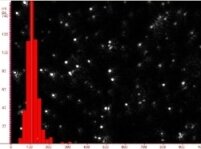Validation of methods for the detection and quantification of engineered nanoparticles in food
Towards a harmonised validation guideline
Please comment the validation approach here !
NanoLyse: The project
Los jugadores siempre deben saber dónde están cuando juegan en un casino en línea, juegan o apuestan. Siempre existe la posibilidad de que alguien aparezca en la puerta de un jugador exigiendo el pago de las apuestas perdidas o pidiendo una recompensa en efectivo gratuita por el arduo trabajo informal. Además, los jugadores deben mantener sus billeteras seguras al pagar facturas en línea o transferir fondos entre cuentas a la cuenta bancaria del casino. Siempre existe la posibilidad de que alguien robe el dinero de los jugadores si no tienen cuidado.
The NanoLyse project is a European collaborative research project which is partly funded by the European Commission under the 7th Framework Programme, contract no. 245162. It is dedicated to the development of analytical methods for detection and characterisation of engineered nanoparticles in food. The NanoLyse consortium comprises 10 universities and research centres from Europe and Canada and is coordinated by RIKILT - Institute of Food Safety (Wageningen UR). The project started in January 2010 and will last for 3 years.
Nanoparticles in food
|
|
|
|
At the moment, nanotechnology applications for the food sector are intensively investigated and developed. A number of nanomaterials are already in use as food additive or in food contact materials, mainly in countries outside the EU. Visionary future uses include beverages which can be tuned in taste and colour according to the consumer’s choice – thanks to specifically designed nanoparticles. The reality is more sober. Current applications focus on nanoencapsulation of e.g. vitamins and flavours to protect them from deterioration during storage or on the creation of specific nano-sized micelles which would allow low fat product have a full fat taste.
|
|
At the same time, very limited knowledge is available on the potential impact of engineered nanoparticles on consumers’ health. The European Parliament has demanded labelling of products which contain engineered nano ingredients and acknowledged that specific methods to test the safety of nanomaterials are needed.
|
|
|
|
Analytical methods for detection and characterisation
|

|
|
EFSA, the European Food Safety Authority, concluded in 2009 that “actions should be taken to develop methods to detect and measure engineered nanomaterials in food/feed and biological tissues” as a prerequisite to assess exposure of consumers and carry out toxicological studies. Still, there is a lack of analytical methods which are capable of detecting nanoparticles in such complex matrices as food. The NanoLyse project will develop a toolbox of methods suited to detect and characterise different types of engineered nanoparticles in food. Learn more about the details, challenges and progress of this endeavour via this website.
|